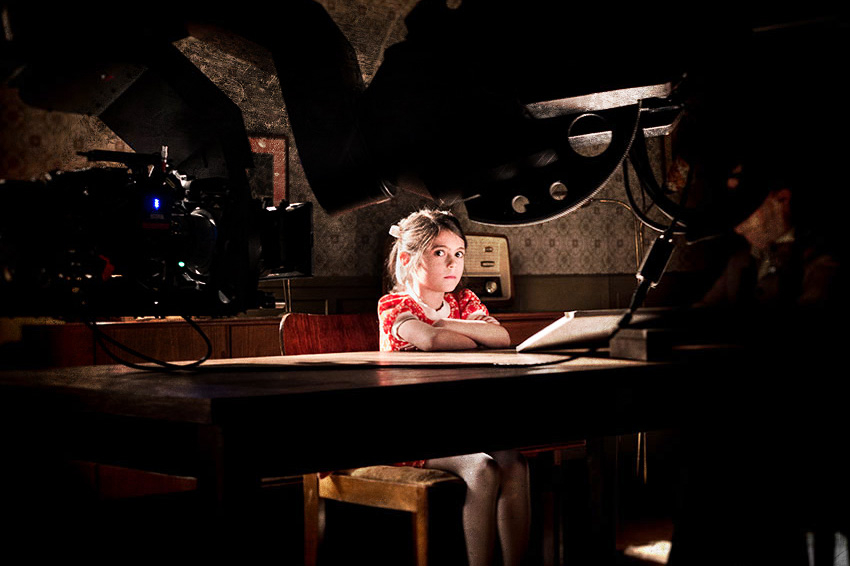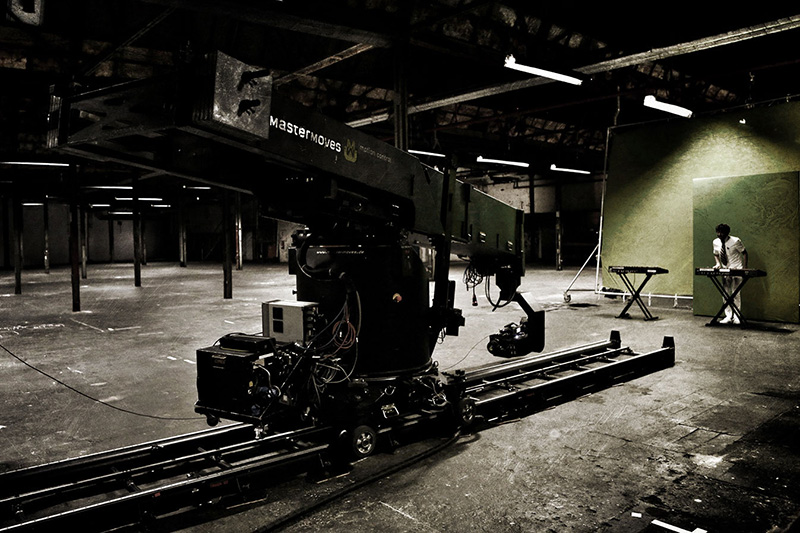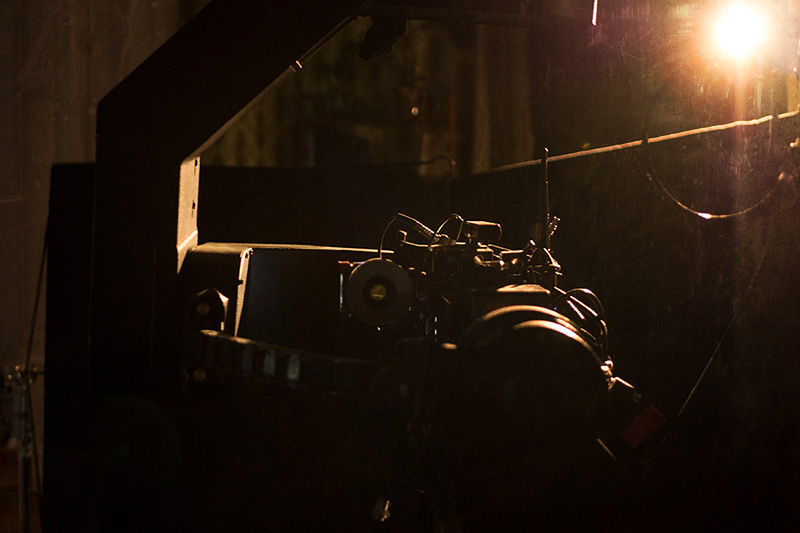Share:
Motion Control Basics
Motion control occasionally get considered on a film set as kind of a motorized and self driving cameracrane and so several times a discussion pops up if those requested movements are really needed to be done by motion control or not. Maybe there is a good way to do it with the incredible skilled team which is on set anyway (it´s always the best ever we know) or even somebody can do that effect easily in post (and there might be a quick offer to do that near by your ears…).
Working in the industry since nearby 20 years I heard often about the bad experience some crew members have been made with MoCo before. Honestly most of the harsh stories that really happened I´m knowing about since it´s a small world at the end of the day, and so I´m assuming there is some rumor to tell others about the very long experience with very special things doing it´s own business…
But beside the big- accidents- ever- damaged- thing it´s mostly the same saga ongoing- Motion control is a time wasting machine where usually nobody knows what happens the whole day and the audience have to wait eyerolling for the nerd on the computer. And in comparison to what you could get if shooting the normal way, it´s a nightmare isn´t it?
But guys, stay fair, how long you would need to setup a shot with 50 keyframes with a crane grip crew, a camera operator and a focus puller?
The answer is simple- you would never do that. And so we usually have a meeting on a shoot going for really sophisticated output, and this is what needs time and efforts to achieve everytime, not only with Motion Control.
It´s true, CG effects technology has been rising up incredibly fast last both decades, but there is one more simple truth about: Those effects have to be done by skilled guys on expensive machines in a time consuming way as well, and so let´s ask- high end photorealism in CG you have to go an extra mile for so why not shoot real things if possible instead? And- maybe you´ll get that piece of magic making your day on top without long discussions in front of a computer screen. For a quick example: Once you have an establishing shot to do with your heros in foreground appearing and a lot of crowd to multiplicate (mixed with 3D crowd) in the mid- and background with a large 3D set extension. This might be easy to do by post using a matchmove of a dolly track you shoot avoiding too much parallaxe. But why not pimp your shot by doing an advanced move, replacing some of your mid- plane crowd and shoot again two or three times? You might end up with a much more cinematic feel…
What I heavily believe in- the best performance in VFX you´ll ever have when combining real and CG. In summary I would say- there is no way to get the real stunning output on that cheap and easy way you´re the first one had figured out. It´s much more truth in that old saying- you get what you pay for.
When having not that rarely talks with DOPs about a planned outstanding shot with Motion Control, after times I often hear by production “we´ll do it another way”, due to the money- or time budget. Watching the result I often tend to say- not just Motion Control got canceled but the outstanding of the shot itself. On the other hand, having productions from US or UK maybe in Babelsberg, there is a much more normal use of Motion Control just for make things quick and easy for shoot and post, they´re going to hire a Milo with a straight face. This looks another way doing things another way…
So I think some more information may not harm to get spread to help to paint out better the uniqueness of the instrument you have with motion controlled cameras. And to clarify that when having an idea you really need to use Motion Control there is no way to do it another way except you´re going for a different effect.
What now you can do with Motion Control in some words?
Control/ Triggers
As already in the name, you get full control about the movement of your camera. This includes the path, the sync, the focus/ iris/ zoom, and the speed (framerate). This is just very basic, but this way you´ll have no issues with your camera move when executing. Once prepared, you can go for a shoot. This is very helpful when having a talent or a director you don´t want to burden with wasting takes by camera, or a difficult and maybe dangerous stunt action or just an effect you can´t repeat easily.
From a MoCo system you can trigger lights, sounds, video playback, sfx- just everything using a switch or timecode to start or stop. The opposite way you can trigger the Motion Control itself to go on a certain point, e.g. when somebody or something is moving through a light barrier or a specific timecode passes by. All those and frame precisely everytime.
Precision/ Mimic
A MoCo move is usually done by keyframing the rig at various camera positions one after another and doing some additional work in the software to end up at a nice and smooth path that tells the story you want in that particular shot. Those can be a parts-of-a-second- shot with a highspeed camera on a highspeed robot featuring a champagne cork popping out, or a 3- minutes plansequence with complexe camera angles and timings for a lot of actors or even a 3- weeks timelapse watching some plants growing up. In summary this means, no other instruments can move cameras that fast, that precise and that slow as a motion control machine can do, since it´s a robot.
In case you want to add some organic feel or need to follow a talent by hand or even things those are going their own way, but need to use Motion Control also, you can do that easily by using some existing mimic- stuff as panbars or handwheels to operate and record the cameras motion as you´re used to do with normal remote stuff (including focus/ zoom/ iris).

Repeatability/ Part Runs
A motion control robot will execute a movement always the same again. For that the machine gets synchronized to the camera shutter (or rather sensor pulse) to make sure to get the exactly same image exposed at the same eyeblink of different repeated takes. So a move is accurately repeatable at the same day or some years later. This feature is the most familiar one Motion Control get hired for and serves to realize very well known effects as double effects, changing foregrounds/ backgrounds or crowd multiplications.
Furthermore you can break your move into parts to shoot sets/ moves which are too big to shoot altogether or just to shoot particular parts you need at a particular moment.
Target Tracking
While a camera position in 3D space is determined by X,Y,Z translation and X,Y,Z rotation it´s possible to determine the rotation data (X/Tilt, Y/Pan for Maya coordinate system, Z is Roll) of the camera also by looking at another point in space with its own X,Y,Z position data. This point is called simply “Target” (as we´re on shooting anyway…). So, when animating those target point in space, the camera changes its rotation data. Using that in MoCo software, it´s easy to travel the camera and hold a certain point in frame no matter if that point is fixed or even moving. This function allows to create complex camera moves just by animating the camera in space as in 3D software, so no fighting with weird warped moves is needed you normally earn when animating singular axies one after another. This is possible since there is an inverse- kinematics- driven rig model inside the software calculated in real time. So the target tracking functionality in fact is the base of all advanced stuff you can do with Motion Control, and this is how a simple timelapse machine or homebuild MoCo- dolly is much different from a high end system what I´m talking about like Mark Roberts´ Milo.
Scaling
Since every camera path is a 3D curve in space and time, it´s freely scalable in space and time once you´ve got a machine to execute (within their physical limits). Since a 3D motion control rig (a jib axis is needed to be one) generates a 3D path inside the software when get programmed, you can go for scale those moves directly out of the box. But furthermore you can scale matchmoved or CG generated shots as well of course.
How to use scaling?
A well known effect is to down- or upsize parts of your shots, usually actors. But you can use those of course for integration of miniature plates into your shot, for instance models of buildings, planes or starships or even effects like water or fire.
Also you can scale a shot in time, so it´s possible to mix timelapse with highspeed plates or forward with backward action.

Stop Motion
This is where motion control initially comes from- big trick tables to animate photographic cameras along a path frame by frame. There is a very kind and hardworking international scene, artful minded, properly connected and working in an own fabric of space and time creating a lot of awesome smaller and bigger films for a growing audience, not only kids. Stop motion is using Motion Control in a wide spread manner since there is no use for live- action- equipment, and due to it´s own universe of time and effort you´ll find here a lot of fancy stuff full of technical expertise and great fantasy as you see in the movies as well. But there are a lot of companies have been using Motion Control on a very high end level for a long period of time.
Model Moving/ Rig Combining
As it´s possible to move a camera with full control it´s for models, actors, cars as well. Simplest is to have a spinning turntable shooting locked camera, you´ll go for a similar effect as if you´d circle around the scene. But it´s easy and sometimes makes sense to move both, so to combine movements. So you can maybe avoid looking out of a greenscreen or execute very complex movements you´d not able to get with just one rig. Or you can move a car or even a dragons neck an actor riding on in a bumpy manner to fake some impacts or air combat. There is a high range of different modelmovers around, but not least a motion control rig itself can go to get a modelmover and combined with another rig moving the camera. There are a lot of possibilities especially by using 3D software to distribute complex moves down to different rigs using their individual abilities.
CG Transfer
Since a 3D path is written when a motion control camera got animated, those can get exported to 3D software and, of course, vice versa. So it´s possible to use a matchmoved camera path to shoot a plate and combine both in post. It´s to say, this an advanced field of motion control use and you need to take care that anyone who is experienced with that does have a deeper look on what you want to shoot. There are physical limits to consider and to make sure the rig you use is properly calibrated and all measurements are done exactly.
Automation
This is a field which is not very well known yet but since I´ve got any experience with that I want to merge those into this sheet. And I think it´s an interesting point at a time where the use of moving images is growing exponentially at internet every minute. Machinery, as usually in normal industry production as well, is very helpful once you´re going to repeat the same basic procedures ever and ever again. In moving pictures business this is the case especially when shooting e.g. a bunch of different products in the same environment, like kitchenware, furniture, food or similar. So you can achieve a very high end imagery using the advantages of Motion Control: Smooth and nice camera moves, as often repeatable as wanted for lighting or retouching or vfx reasons, but with a (in comparision to a normal set) very small amount of crew.

Share:
